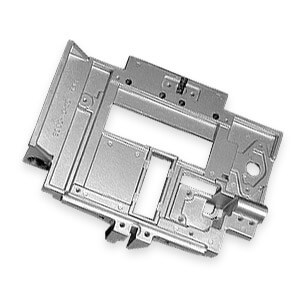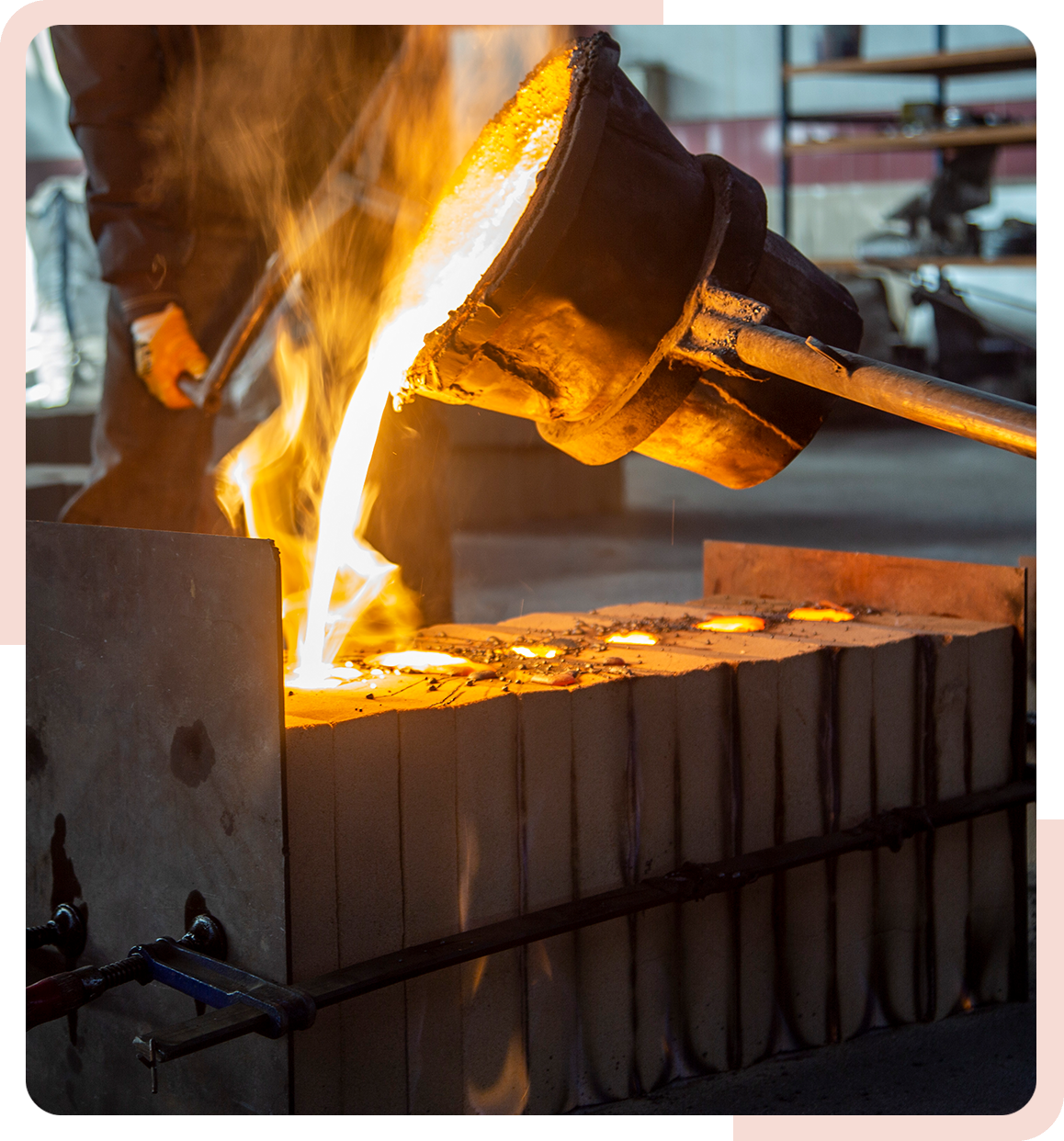What Makes Aluminum Casting Company Indispensable in the Aerospace Industry
Aluminum Casting Explained: Key Facts and Insights for Industry Professionals
Aluminum casting acts as a crucial process in contemporary production, shaping parts throughout various markets. Its varied techniques, such as sand and die casting, cater to various production requirements. The unique residential properties of aluminum alloys enhance their applicability, yet challenges continue to be in keeping quality and effectiveness. Understanding these aspects is crucial for industry professionals. What are the most recent developments and ideal techniques that can even more enhance this procedure?
Review of Aluminum Casting Processes

Secret components of aluminum casting procedures include the prep work of mold and mildews, which might be made from sand, metal, or ceramic products, depending on the intended usage. Additionally, temperature level control is important to assure proper melting and solidification of aluminum.
The casting process allows for detailed layouts and can accomplish high levels of dimensional precision. As soon as cooled down, the spreadings may undergo ending up operations such as machining or surface area treatment to meet details performance criteria. Generally, aluminum casting serves as a flexible production method, successfully meeting the diverse needs of numerous markets.
Sorts Of Aluminum Casting Methods
In the domain name of aluminum casting, various methods are used to accomplish different outcomes. Sand casting techniques give versatility and cost-effectiveness for complex shapes, while die casting procedures provide high accuracy and efficiency for automation. Understanding these approaches is crucial for choosing the ideal approach based upon task demands.
Sand Casting Strategies
Sand casting techniques represent an essential approach in aluminum casting, where sand is made use of as a mold and mildew product to shape molten steel. This process entails creating a pattern from the wanted part, which is then placed in a sand mixture to create a mold and mildew. The sand is compacted around the pattern, and after removal, it produces a cavity in the shape of the component. Molten aluminum is put into this dental caries, allowing it to cool down and solidify. One substantial benefit of sand casting is its flexibility; it can suit intricate forms and huge elements. In addition, the materials utilized are fairly low-cost, making it an easily accessible alternative for different production applications in the aluminum sector.
Die Casting Processes
Die casting procedures are a noticeable approach for forming aluminum parts, making use of high-pressure strategies to compel liquified steel right into exactly crafted mold and mildews. This procedure is specifically favored for its capacity to produce complex shapes with tight tolerances and a smooth finish. There are two key kinds of die casting: hot chamber and cool chamber. Hot chamber die casting appropriates for metals with reduced melting factors, enabling faster manufacturing prices. Alternatively, cool chamber die casting is suitable for higher melting point steels, needing a separate melting furnace. Both methods boost performance and decrease material waste, making them necessary in vehicle, aerospace, and customer products markets. Comprehending these processes helps professionals pick one of the most appropriate technique for their details applications.
Material Residence of Aluminum Alloys

Toughness and Resilience
Strength and longevity are important characteristics of aluminum alloys that make them appropriate for various casting applications. These products show a favorable strength-to-weight ratio, enabling for the production of lightweight yet durable elements. When it come to tensile toughness, details aluminum alloys can be engineered to hold up against significant lots without deforming. This residential or commercial property is especially vital in sectors such as aerospace and automotive, where performance and safety and security are paramount. Additionally, aluminum alloys frequently maintain their mechanical homes under varied temperature level problems, making certain regular performance. The innate ductility of these alloys likewise enables efficient shaping during the casting process, making it easier to generate complex geometries. Overall, the strength and durability of aluminum alloys contribute greatly to their widespread usage in sites sophisticated applications.
Rust Resistance Characteristics
While aluminum alloys are valued for their toughness and light-weight homes, their corrosion resistance is one more important characteristic that boosts their suitability for various applications. Aluminum normally develops a protective oxide layer when exposed to dampness, which aids to stop more oxidation. This fundamental property makes aluminum alloys especially useful in environments prone to deterioration, such as commercial and marine setups. Furthermore, different alloy compositions can affect resistance levels, with specific alloys specifically crafted to improve this particular. Treatments like plating can additionally improve deterioration resistance by enlarging the oxide layer. Recognizing the rust resistance of aluminum alloys is essential for market specialists when selecting products for projects needing longevity and longevity in difficult environments.
Advantages of Aluminum Casting in Production
Aluminum casting offers many benefits in production, making it a recommended choice for numerous industries. One significant benefit is its lightweight nature, which adds to reduced transportation expenses and boosted energy efficiency in final result. Furthermore, aluminum's exceptional thermal and electric conductivity enhances capability in applications needing heat dissipation or electrical transmission.
The material's capability to be cast right into detailed forms permits layout adaptability, decreasing the need for extra machining processes. In addition, aluminum casting exhibits exceptional rust resistance, leading to longer item lifespans and lower maintenance prices.

Usual Applications of Aluminum Castings
The adaptability of aluminum casting enables its extensive usage across different industries. Usual applications consist of auto parts, where lightweight and corrosion-resistant components, such as engine blocks and transmission housings, boost lorry performance. In the aerospace industry, aluminum spreadings are made use of for structural components, using stamina without including considerable weight.
Furthermore, the electrical market benefits from aluminum castings in manufacturing enclosures and warm sinks, where thermal conductivity is crucial. The consumer products sector also includes aluminum castings in products like kitchenware, furniture, and ornamental items, combining aesthetics with performance.
Additionally, the construction industry uses aluminum castings for building components, home window structures, and components, which supply toughness and layout adaptability. In general, the diverse applications of aluminum castings underscore their relevance in modern-day production, adding to developments in effectiveness and product style throughout numerous areas.
Advancements and Technological Developments
As industries continue to advance, advancements in aluminum casting innovation are transforming manufacturing procedures and item abilities. Improvements in 3D printing and additive production have made it possible for the production of complicated geometries that were previously difficult to achieve with typical techniques. These innovations enable fast prototyping, decreasing preparations and expenses.
In addition, enhancements in mold and mildew style and products have boosted the casting process by increasing performance and decreasing waste. The assimilation of smart production techniques, such as IoT devices and real-time data analytics, enables much better monitoring and optimization of manufacturing parameters, leading to greater quality outcomes.
Growths in aluminum alloys provide improved toughness, deterioration resistance, and lightweight residential properties, catering to the growing demands in aerospace and vehicle sectors. Jointly, these technologies are not only enhancing performance yet also satisfying the extensive requirements of modern engineering applications.
Best Practices for Quality Assurance in Aluminum Casting
Guaranteeing high-grade results in aluminum casting requires adherence to finest techniques that incorporate numerous phases of the manufacturing procedure. Complete product examination is important to confirm the high quality of aluminum alloys made use of, as contaminations can greatly affect the final item. Implementing precise melting and putting strategies reduces problems; keeping excellent temperature levels stops oxidation and promotes uniformity.
Moreover, mold layout plays an important function; using computer-aided layout (CAD) can improve precision and lower human error. Normal tracking navigate here of the cooling procedure is critical to stay clear of warping and contraction. Furthermore, utilizing non-destructive screening techniques, such as ultrasonic or X-ray inspections, helps recognize internal imperfections without harming the components.
Ultimately, establishing a responses loophole with drivers and designers promotes continual enhancement, making certain that high quality control measures evolve alongside technical developments. By complying with these ideal practices, makers read what he said can enhance the dependability and performance of aluminum castings.
Frequently Asked Questions
What Are the Environmental Influences of Aluminum Casting?
The ecological impacts of aluminum casting consist of significant energy intake, greenhouse gas emissions, and possible water air pollution from factory operations. In addition, bauxite mining for aluminum ore can bring about environment damage and soil degradation.
Exactly How Does Aluminum Casting Contrast to Other Steel Casting Procedures?
Aluminum casting commonly supplies benefits in lightweight parts and corrosion resistance compared to various other procedures, such as iron or steel casting, which may give higher stamina but result in heavier and less corrosion-resistant products. - Precision aluminum casting
What Prevail Defects in Aluminum Castings and Their Causes?
Common defects in aluminum castings include porosity, shrinking, and additions. Reasons usually stem from inappropriate putting strategies, poor mold and mildew layout, or contamination of the liquified metal, impacting the end product's integrity and efficiency.
What Safety Precautions Should Be Taken Throughout Aluminum Casting?
Throughout aluminum casting, essential safety precautions include wearing safety equipment, making sure correct air flow, keeping a tidy work area, handling liquified metal with care, and adhering to well-known methods to reduce risks of burns, inhalation risks, and accidents.
Exactly How Can I Boost the Performance of My Aluminum Casting Workflow?
To improve performance in aluminum casting operations, one need to enhance mold and mildew style, streamline product handling, employ automated procedures, conduct normal maintenance on devices, and purchase worker training to boost skills and performance.
Various approaches exist, aluminum casting encompasses numerous primary processes that provide to different applications and demands. Trick elements of aluminum casting procedures include the prep work of mold and mildews, which might be made from sand, metal, or ceramic products, depending on the meant usage. Sand casting strategies stand for an essential technique in aluminum casting, where sand is used as a mold material to form molten steel. As industries continue to advance, technologies in aluminum casting innovation are changing manufacturing processes and product abilities. Ensuring high-quality outcomes in aluminum casting requires adherence to finest techniques that encompass different phases of the manufacturing process.